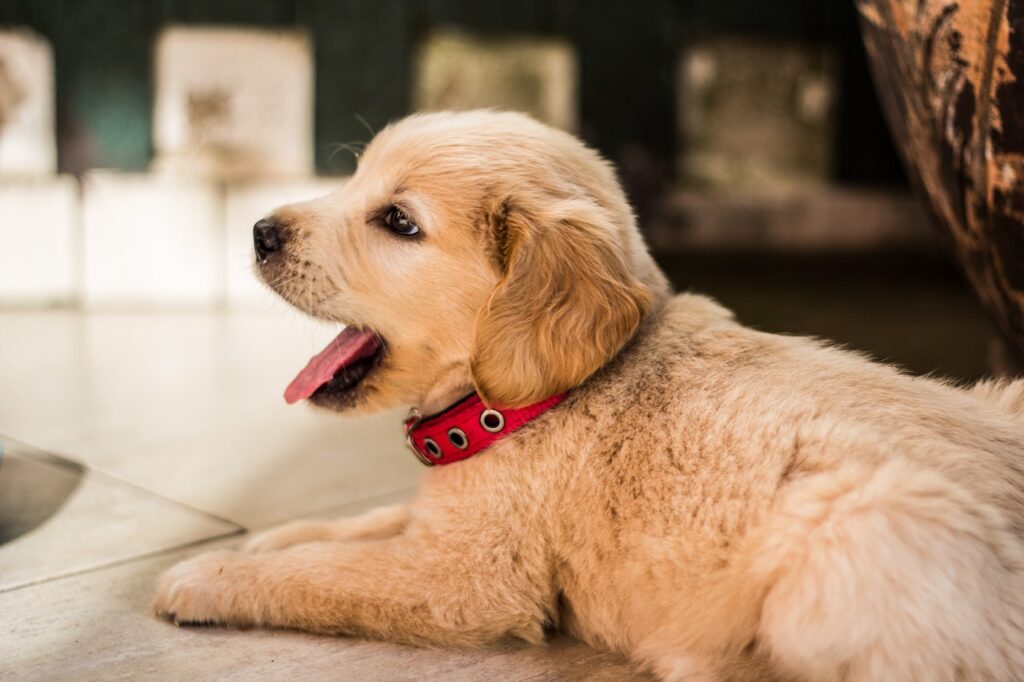Have you ever found yourself immersed in a game of tug-of-war with your adorable fur baby, only to realize that a tiny, sharp tooth is now detached from their mouth and lodged in the toy? Don’t fret, fellow dog enthusiasts! This is a natural and expected phenomenon in the development of your little buddy, and nothing to be alarmed about.
This transitional journey from puppy teeth to adult teeth is an exciting part of your pet’s growth.
In this article, we’ll delve into the captivating world of puppy teething, answering that lingering question: when do puppy teeth fall out?
Table of Contents
Understanding the Puppy Teething Timeline
In the wild, a dog’s dental health is as crucial as its physical prowess. A pup’s first set of teeth, also known as deciduous teeth or milk teeth, usually starts to appear between 2 to 4 weeks of age. These comprise of 28 baby teeth, designed perfectly to help your pup tackle its mother’s milk and make the first foray into solid food. But, akin to a baby’s adorable gummy smile, these teeth are fleeting.

As your pup matures, its jaw strengthens, accommodating the arrival of permanent adult teeth, amounting to a robust set of 42. This transition begins around 12 to 16 weeks, and by the time your puppy is about 6 to 7 months old, it should sport a full set of adult teeth.
The Puppy Teething Process
Puppy teething is a two-step waltz. The first dance begins around 3 months of age when the puppy teeth start falling out to make way for adult teeth. Canines and incisors are usually the first to go, followed by premolars. Molars, the last addition, typically appear by 5-7 months.
Teething is like a jigsaw puzzle for your pup, except the puzzle pieces are teeth! One piece falls out, another fits right in its place. It’s a seamless, almost invisible process, which might leave you pondering, where are all the fallen teeth? Well, your furry friend might be guilty of swallowing some. Fear not, it’s generally harmless.
As we venture further into this exciting, albeit challenging, stage in your puppy’s life, understanding the step-by-step process of puppy teething becomes crucial. It’s an intricate dance, beautifully choreographed by nature, ensuring your pup transitions smoothly from their deciduous teeth to a full set of permanent chompers.
Step 1: Emergence of Puppy Teeth
Your fur baby is born toothless, but this gummy phase doesn’t last long. Between 2 to 4 weeks of age, the first set of puppy teeth, also known as deciduous teeth, start to make their appearance. The emergence typically begins with the incisors, followed by the canines and then the premolars. The set is complete with 28 tiny, sharp teeth, fully equipped to start dealing with solid food.
Step 2: Arrival of Adult Teeth
Around the 12-week mark, your pup will begin the transition into adulthood, at least dentally. The baby teeth will start to loosen and fall out, making room for the permanent teeth.
The falling out process isn’t necessarily in a set order, but usually, the sequence is as follows:
- The incisors (the small front teeth) are the first to go around 12 to 16 weeks.
- The canine teeth (the long, pointy ones) follow suit around 16 weeks.
- The premolars (the teeth located at the back of the mouth) fall out last, usually between 16 to 24 weeks.
Step 3: Molar Eruption
While all this is happening, your pup’s first set of molars will begin to erupt around the age of 4 to 6 months. These do not replace any deciduous teeth and are an addition to the forming set of adult teeth.
Step 4: Completion of Adult Teeth Set
By the time your puppy is 6 to 7 months old, the deciduous teeth should be entirely replaced by 42 adult teeth, including the additional molars. However, sometimes not all puppy teeth want to make way for the adult teeth. If you notice any retained puppy teeth (those that haven’t fallen out while the adult tooth is coming in), it’s best to seek veterinary advice, as these could potentially cause problems down the line.
Step 5: Regular Dental Check-Ups
Once your puppy has a full set of adult teeth, the teething process might be over, but dental care is ongoing. Regular check-ups with a vet can ensure your pup’s teeth are in the best possible condition, and any potential dental issues are addressed promptly.
In essence, the teething process is a rite of passage for your pup, leading them one step closer to adulthood. Through each stage, your role as a puppy parent is to monitor the process, ease the discomfort, and ensure that by the end, your furball boasts a healthy, radiant set of adult teeth.
Puppy Teething Symptoms
Think about the last time you suffered a toothache, and you’ll appreciate why teething can be a trying time for your puppy. Common symptoms include:
- Chewing and biting on everything
- Drooling more than usual
- Whining and restlessness
- Slight fever
- Loss of appetite
How to Care for a Teething Puppy
Recognizing your puppy’s discomfort is the first step to providing relief. Here’s how you can lend a helping hand:
- Provide Chew Toys: Invest in quality chew toys. They’ll act as a distraction, soothe your puppy’s gums, and prevent them from gnawing on your prized possessions.
- Serve Cold Treats: Imagine the bliss of a cold popsicle on a hot summer day! Similarly, chilled treats can ease your puppy’s teething discomfort.
- Maintain Dental Hygiene: Regular brushing with puppy-specific toothpaste can keep dental problems at bay.
FAQ: Puppy Teething
Q: Is there a specific sequence in which puppy teeth fall out? A: Typically, canines and incisors fall out first, followed by premolars. However, the sequence might vary slightly.
Q: What should I do if my puppy swallows a fallen tooth? A: Don’t worry! It’s usually harmless. But if you notice any signs of distress, contact your vet.
Key Takeaways
Understanding your puppy’s teething process can help you empathize with its discomfort and provide proper care. Remember:
- Puppy teeth start to fall out around 12-16 weeks of age.
- By 6-7 months, your puppy should have a full set of adult teeth.
- Keep an eye out for teething symptoms and provide relief accordingly.
To wrap it up, puppyhood is like a fairy tale with a bit of teething trouble thrown into the mix. As your tiny pal navigates this stage, shower them with patience, love, and perhaps a few extra cuddles. After all, doesn’t the beauty of raising a pet lie in witnessing these small, yet profound transformations? This is your story together, so embrace every toothy grin and cherish each tiny fallen tooth as a keepsake of your pup’s journey towards adulthood.


Dennis and Becca, have always shared a passion for man’s best friend. As dog enthusiasts, they put together articles that inform, engage, and captivate fellow dog lovers.